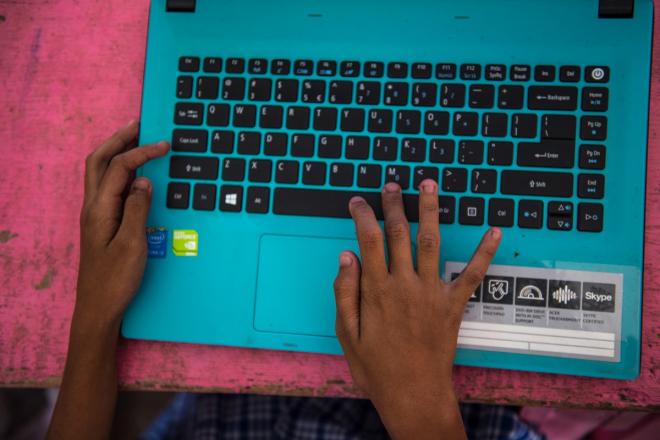
Social distancing has heightened the difference between digital haves and have-nots.
A survey of more than 68,000 young people in six ASEAN countries shows they cope with challenges during the pandemic by using digital technology for school or work.
However, those who lack digital skills and access to the internet have a tougher time.
Results of the World Economic Forum-backed survey underscore the need for more policy support to upgrade the digital infrastructure in Southeast Asia and equip the future workforce with relevant skills and resources.
Demographic dividend
ASEAN is largely a young region. The objective of the annual youth survey is to provide insights that can help policymakers harness ASEAN’s demographic dividend, says Joo-Ok Lee, head of the Regional Agenda for Asia–Pacific at the World Economic Forum, in the survey report.
The survey was conducted online in June 2020 through Sea, which runs the Shopee e-commerce platform, digital entertainment provider Garena, and SeaMoney, a digital financial services network. Respondents are between 16 and 35 years old and come mainly from Indonesia, Malaysia, Philippines, Singapore, Thailand, and Viet Nam.
The survey shows increased use of the internet for learning, business and government services, entertainment, purchases, and payments. A third of the entrepreneurs use e-commerce more actively with one in four using it for the first time. Workers, not just students, are turning to online learning. Most of the respondents say their use of digital tools will continue beyond the crisis.
“The youth will likely come out of the pandemic benefiting from an unprecedented level of digital transformation, a precious life-long learning and growth mindset, more resilient, more creative, and better prepared for future uncertainties,” says Santitarn Sathirathai, chief economist at Sea. “The challenges the youth faced during social distancing, however, uncovered significant gaps in digital skills, digital infrastructure, and funding among ASEAN youth. Multistakeholder efforts to address these gaps are needed more than ever before.”
Closing the gap
Majority or 69% of survey respondents find it difficult to study or work remotely mainly because their internet connection is weak and costly. Those who are ill at ease with the technology, do not have a college education, and live outside the capital city also tend to have problems with online learning or working.
The report also notes that workers below 25 years old are more likely to find working remotely challenging if they are living outside the capital, in the education and agriculture sectors, have temporary jobs, or working for small and medium-sized enterprises.
Nearly 20% of respondents also complained about lack of funds during this period of social distancing.
Investing in the youth
A digital dividend arising from the coronavirus disease (COVID-19) crisis is the acceleration of the digital transformation of emerging economies, including those in Southeast Asia. Naysayers from the public and private sectors now see the benefits of digitalization and improved connectivity as social distancing becomes the new normal.
The report says the digital economy can help drive inclusive and sustainable. First, however, ASEAN needs to invest in enhancing the digital skills of its youth and improve access to a high-quality and affordable digital infrastructure. In addition, it suggests funding support particularly for entrepreneurs. Policies may include government credit programs, promoting digital financing and e-payments, and financial literacy programs.
This article was first published by BIMP-EAGA on 12 August 2020.

